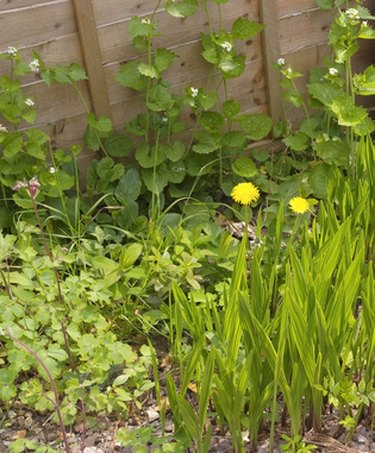
Urea is a synthetic fertilizer that is high in nitrogen, one of the three essential nutrients for plants. In fact, nearly half of urea's weight -- 45 to 46 percent -- is nitrogen. Nitrogen encourages leaf and stem growth, but too much can inhibit fruiting or cause leaf burn.
Expert Insight
Video of the Day
The National Gardening Association recommends one-quarter to one-half pound of actual nitrogen per 100 square feet of vegetable garden. For strawberries, the West Virginia University Extension Service recommends one-third cup of complete urea for a 100-foot row; for raspberries, the recommendation is twice as much.
Video of the Day
Considerations
Measurements for "actual" nitrogen refer to the specific nutrient, which for urea will be about 45 percent of the weight of the purchased urea. Commercial fertilizers are labeled with three numbers, the first of which is nitrogen; for urea, the second two numbers -- representing phosphorus and potassium -- are normally zero.
Types
Urea's high potential for leaf burn can be offset by using it in solution, by using synthetic blends -- such as methylene urea -- or by using urea coated by another substance, such as resin or sulfur. These variations retain urea's high-nitrogen content but in a slower-release form. You could apply them more generously.
- University of Minnesota Extension: Responsible Fertilizer for Lawns, by Robert J. Mugaas
- National Gardening Association: Garden Calculator: Nitrogen
- West Virginia University Extension Service: Fertilizing Small Fruits in the Home Garden
- MSUCares: Miss. State U. Extension Service: Discover Garden's Fertilizer Needs
- US Census Bureau: N. Am. Industry Classification System Subsector 325: Chemical Manufacturing